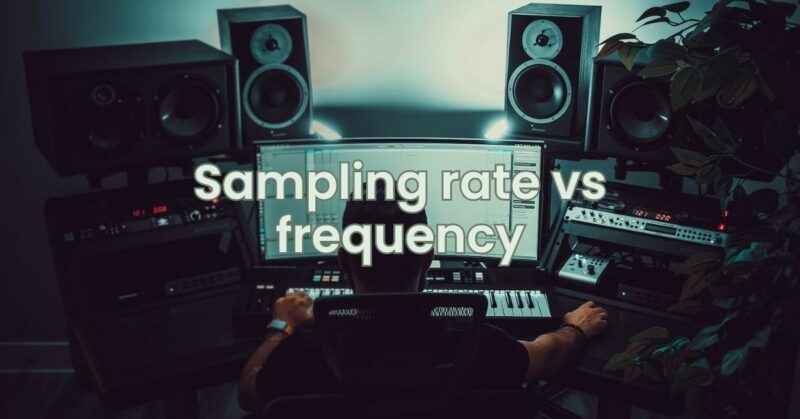In the realm of digital audio, the relationship between sampling rate and frequency is crucial to understanding how analog audio signals are converted into digital form. Sampling rate determines how many audio samples are taken per second during analog-to-digital conversion, while frequency refers to the number of oscillations or cycles per second in an audio signal. In this article, we explore the connection between sampling rate and frequency and their significance in capturing audio fidelity accurately.
Understanding Sampling Rate and Frequency:
- Sampling Rate: Sampling rate, expressed in Hertz (Hz), represents the number of audio samples captured per second during the process of analog-to-digital conversion. It defines the precision of the digital representation of the original analog audio waveform. Common sampling rates used in digital audio include 44.1 kHz (CD-quality), 48 kHz, 96 kHz, and even higher rates like 192 kHz.
- Frequency: Frequency, also expressed in Hertz (Hz), refers to the number of oscillations or cycles per second in an audio signal. It represents how often a wave completes one full cycle within a given time frame. In the context of digital audio, frequency denotes the pitch of the audio, with higher frequencies corresponding to higher pitches (e.g., treble) and lower frequencies corresponding to lower pitches (e.g., bass).
The Relationship Between Sampling Rate and Frequency:
The Nyquist-Shannon Sampling Theorem, a fundamental concept in digital signal processing, establishes the relationship between sampling rate and frequency. According to the theorem, to accurately represent an analog audio signal in digital form, the sampling rate must be at least twice the maximum frequency of the audio signal.
Mathematically, the Nyquist-Shannon Sampling Theorem can be stated as follows:
Sampling Rate (S) ≥ 2 × Maximum Frequency (Fmax)
This principle ensures that the digital representation captures all the essential information in the analog signal, preventing aliasing, which is an undesirable distortion that occurs when higher frequencies are incorrectly represented in the digital domain.
Implications in Audio Fidelity:
The sampling rate’s relationship to frequency has significant implications for audio fidelity. A higher sampling rate allows for a more accurate representation of high-frequency content in the audio signal. This increased precision is particularly advantageous when dealing with audio that contains intricate high-frequency elements, such as cymbals, vocals, or harmonics.
On the other hand, a lower sampling rate can lead to a phenomenon called “frequency folding” or “aliasing.” When the sampling rate is insufficient to represent the highest frequencies in the audio signal, they fold back into the audible frequency range, causing distortion and audio artifacts.
Choosing the Appropriate Sampling Rate:
Selecting the appropriate sampling rate depends on the audio material and the desired audio quality. For most standard audio applications, a sampling rate of 44.1 kHz (CD-quality) or 48 kHz is more than sufficient to accurately capture the entire audible frequency range. However, higher sampling rates, such as 96 kHz or 192 kHz, might be preferred for professional audio production or when working with high-resolution audio formats, providing a more comprehensive representation of the original audio signal.
Conclusion:
The relationship between sampling rate and frequency is vital in digital audio, as it ensures accurate representation of analog audio signals in the digital domain. Understanding this connection is crucial for audio engineers and enthusiasts to make informed decisions when selecting the appropriate sampling rate for capturing audio fidelity accurately. Balancing the sampling rate with the maximum frequency of the audio content leads to faithful reproduction and an enjoyable listening experience, allowing us to appreciate the intricate nuances of the sound we cherish.

